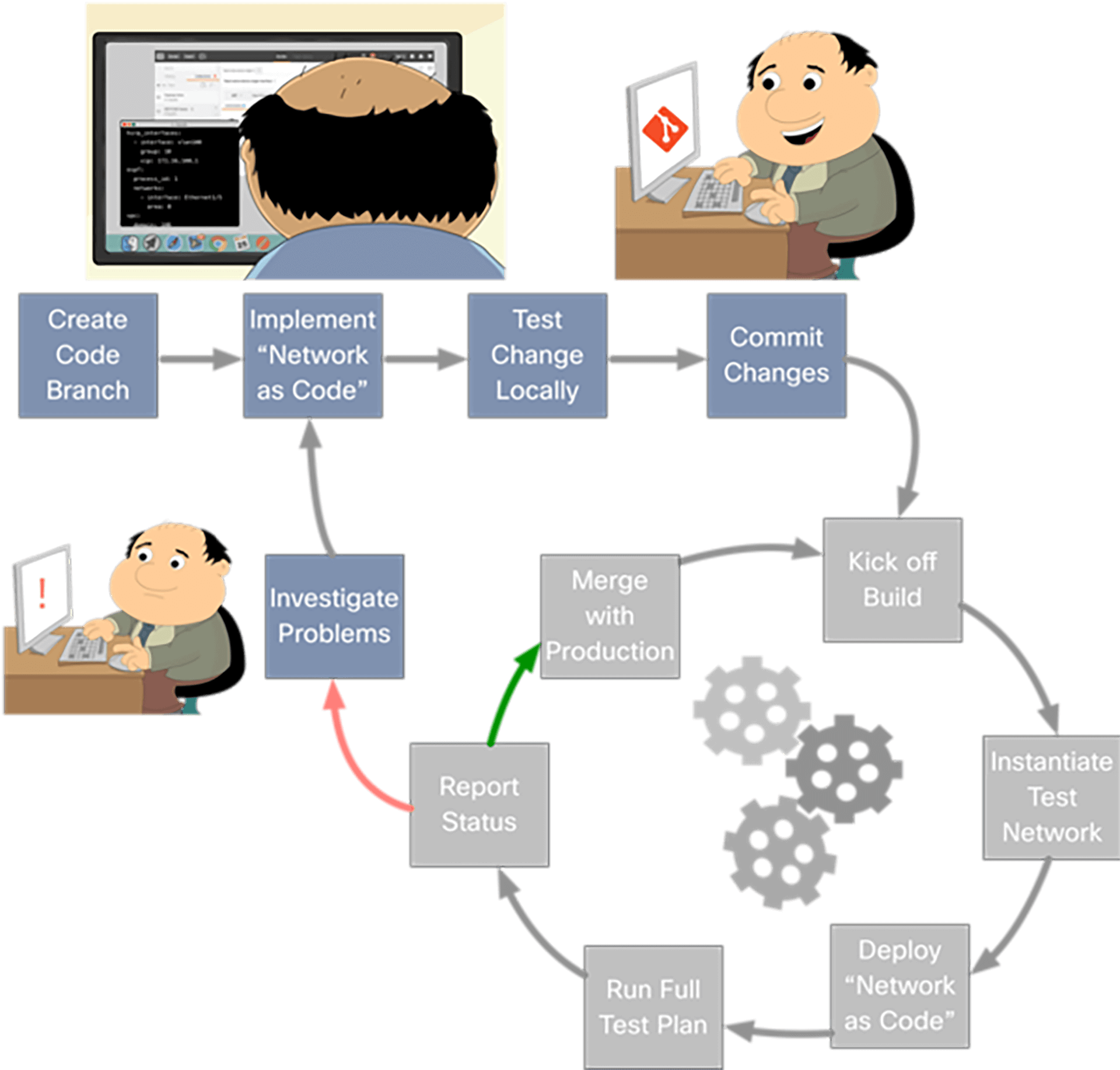Getting Started with Network Automation
What is network automation?
After many years in the trenches with Software-Defined Networking and more specifically; protocols like OpenFlow, the ability to design and build agile and programmable enterprise networks is now here with us, this is through Network Programmability and Automation.

It is now understood as a set of tools and best practices to deploy, manage and troubleshoot network devices thereby increasing the speed, agility, and consistency of managing traditional and cloud-native business applications. Fundamentally, it’s about workflows and data.
Without getting ahead of ourselves, let us answer the obvious question, what is Software-Defined Networking (SDN)? Simply put, this refers to the combination of three elements:
- Network Programmability
- Network Virtualization
- Network Overlays
A Software Defined Network (SDN) utilizes software to automate network and security provisioning and management. SDN adds new features and protocols to network devices. These features and protocols enable the use of programming techniques to configure the devices and define how the devices process data.
In order to expose the SDN features on the devices accessible over the network, vendors like Cisco have created Application Programming Interfaces (APIs). Both network engineers and developers can now write software that uses these APIs to dynamically configure the network.

Figure 1: Diagrammatic representation of Network Automation. Ref: developer.cisco.com
A common question is what level of knowledge one needs to have before diving into Network Programmability and Automation? All you need is basic Networking Knowledge (CCNA Level), you should already be familiar with networking concepts like: Routing and Switching, and an understanding of programming concepts, preferably in Python since it’s the most popular Network Automation tool. You should have a great desire to learn network infrastructure as code concepts and do it in a hands-on fashion.
How does network automation work?
Network automation software determines the most efficient method of mapping, configuring, provisioning, and managing a network. Each networking device is configured by replacing manual, command-line instructions with API-based automation. The APIs can be accessed directly or using a programming language such as Python.
A contemporary automation platform monitors network resources during provisioning and ensures that a network can handle a configuration request before executing it. More sophisticated network automation leverages machine learning and big data to understand how to best configure and maintain a network to fulfill specific business goals.
It employs a high-level, centralized view of the entire network to determine how a network should function to accomplish these goals. Cisco DNA Center is a good example of such a solution. It goes further ahead to allow for intent-based networking.
An intent-based network considers how a business requirement would influence a network as a whole and provides many options to meet that desire. Intent-based networking is desirable because network engineers can easily scale the network to fulfill various goals while reducing the number of misconfigurations caused by human error.

Benefits of Network Automation
Improved operational efficiency: Automating network tasks reduces the time it takes to complete the same jobs manually by more than half, considerably enhancing efficiency.
Reduced error probability: Removing the human aspect from complicated network processes reduces the possibility of errors due to neglect and oversight.
Lower operational expenses: Reduced time, errors, and increased efficiency make the network faster and more agile, which benefits application development and deployment efforts. Businesses can thus obtain faster results at lower prices. It also reduces the resources committed to repetitive network operations and instead puts them to good innovative use, resulting in additional cost savings.
The Future of Network Automation
Network Automation is critical for implementing newer network technologies such as software-defined networking (SDN), intent-based networking (IBN), and network function virtualization (NFV), which are critical in today’s highly digitalized business environment. Because the future is in the cloud, automation should include hybrid and multi-cloud setups and traditional on-premises ones.
As businesses expand their networks and adopt new technology, network risks increase. Network automation technologies should maintain secure networks through straightforward vulnerability detection and mitigation approaches.
Incorporating AI and machine learning into network automation approaches can assist organizations in maintaining their networks agile, secure, and up to date.


No Comments